7 tips to fuel your next off-road RV adventure
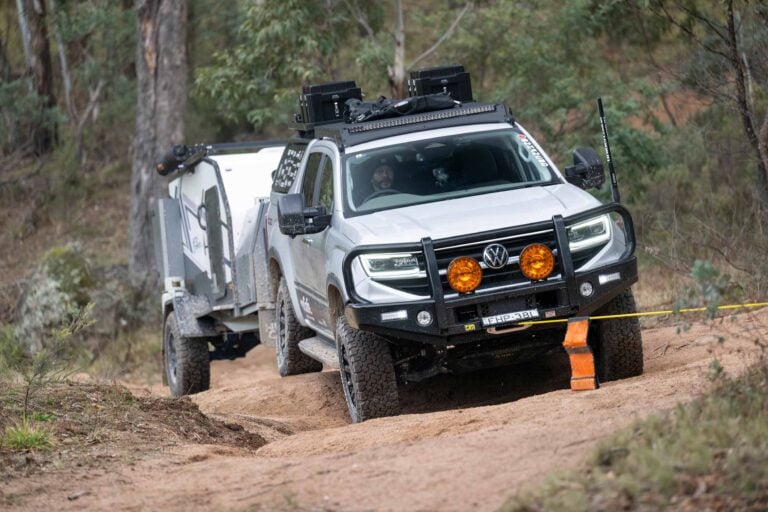



The best places to unhitch your RV are on the bitumen in the glare of city lights – said no camper ever. The beauty of having a rugged home on wheels – be it a caravan or camper trailer – is the ability to seek out epic campsites in remote places. Think a beachfront spot at Ningaloo, a rainforest hideaway in far north Queensland or a starlit outback camp in the Red Centre.
Before you ditch the blacktop, here are seven tips for towing on unsealed roads.
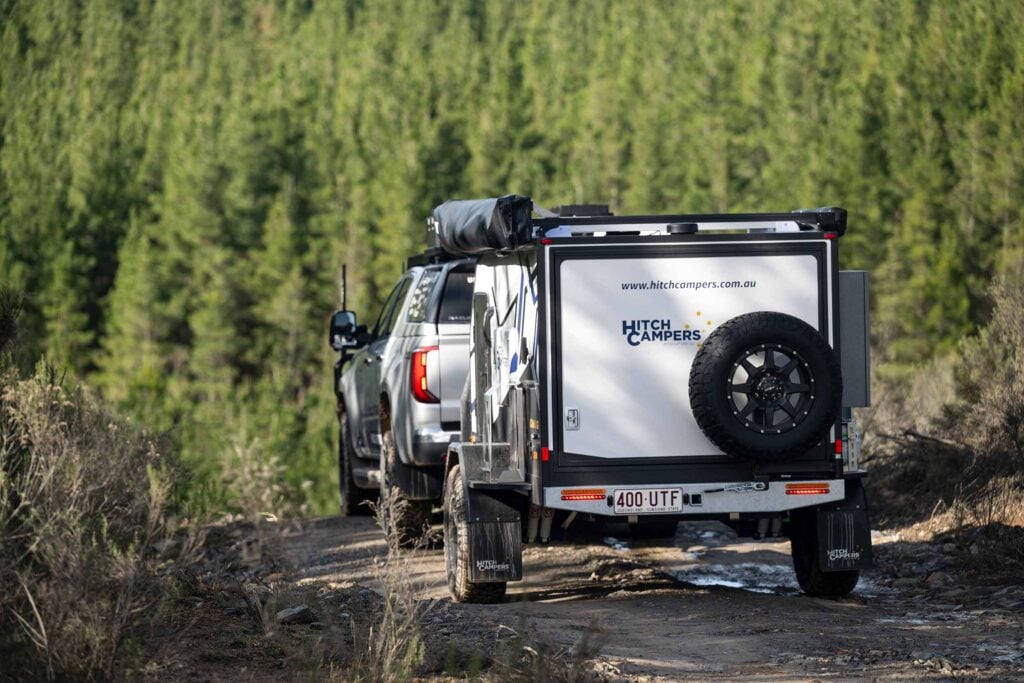
Day two on the Gibb River Road when your air-conditioner bungy jumps from the ceiling is not the time to discover your caravan is not built for the rough stuff. While there are no clear guidelines in Australia for what constitutes an official off-road RV, there are key features you should look for before making the leap off the bitumen. As explained in episode five of Are you rvSafe?, not all trailers are made equal. Knowing that your caravan or camper trailer is badged ‘off-road’ or ‘semi off-road’ is a good start. In theory, this means that the build quality is beefed up for maximum durability.
Look for a strong, reinforced chassis with independent suspension, good quality all terrain tyres, like BFGoodrich, and high ground clearance (50cm is a good benchmark). Choose an off-road hitch with full articulation that enables greater movement and vehicle rollover protection, such as the Cruisemaster DO35. Check that your external wiring and plumbing are secured tightly to the trailer underbody and protected from stone chips (pool noodles are a great DIY solution). Inside, make sure your cabinetry won’t shake loose on corrugations and bumpy terrain. Cabinets that are glued and screwed in place trump staple-assembled interiors.
Lowering your tyre pressures on both the tow vehicle and trailer is essential for driving on unsealed roads. Airing down increases traction by expanding the tyre’s footprint. By increasing the tyre’s contact surface area in length (not width), the tyre is less likely to sink in soft terrain, like sand, and has reduced rolling resistance. How much you deflate your tyres depends on the terrain, gradient and load. A good rule of thumb is to drop your tyres to 75 per cent of the manufacturer-recommended pressure, typically 30 to 36 PSI (check your placard). So if your tyre rating is 30 PSI, start by dropping your pressure to about 22 PSI. The softer the terrain, the lower your tyre pressure should be. For sand driving, consider lowering your tyres to 18 to 20 PSI and going as low as 12 PSI in extremely soft sand.

Driving off road is unpredictable. Not only are the road conditions variable and challenging, there are also roadside hazards to look out for. Things like low-hanging branches, shoulder drop-offs and wandering wildlife and stock. You need to back off speed in order to assess the road ahead and allow enough reaction time to drive to the conditions. A pothole or sharp boulder spotted at the last minute could ruin your long weekend. Go easy on the throttle when setting off. Unsealed terrain has less grip than bitumen and it’s easy to spin your wheels if you accelerate too quickly. Likewise, don’t brake too sharply or you risk locking up the tyres, hitting the skids and losing control of the car. With the added weight of a trailer on the back, this scenario is a recipe for disaster.
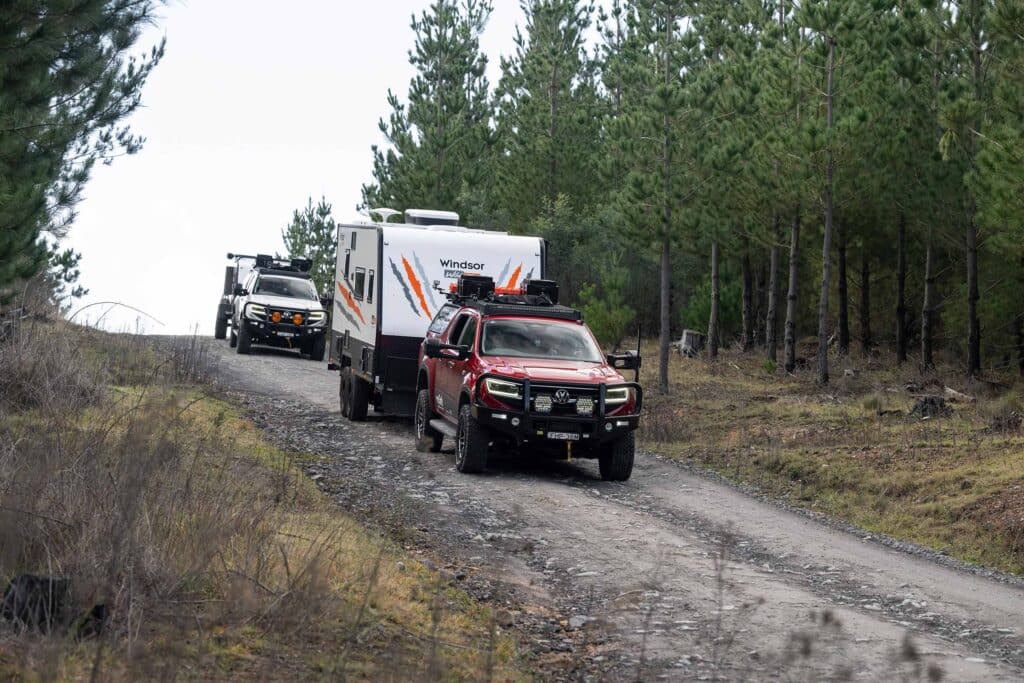
You have a vehicle with a front and rear drivetrain, now’s the time to use it. Activating four-wheel drive provides torque to each of the vehicle’s four wheels simultaneously, effectively doubling your drive force and traction. This is especially helpful when towing a heavy trailer through boggy terrain. Use low range four-wheel drive for maximum torque when navigating steep climbs and descents. On the downhill, activate the trailer brakes to minimise the pushing force of the caravan or camper, reduce slippage and keep it in line with the tow vehicle.
Getting bogged is all part of the fun, right? Maybe, but not when you’re racing the sunset and an incoming tide is lapping at your wheels. It’s important to take precautions so that you can get yourself out of a sticky spot and not rely on the goodwill of others (have you seen the cost of tow trucks in the outback?). A recovery kit is essential for every four-wheel driver. Start with good quality Exitrax recovery boards (two sets for the vehicle and another for the trailer). The boards will help provide traction for the wheels to claw their way out of soft terrain like bulldust, sand and mud, and when used on the trailer tyres help reduce drag resistance.
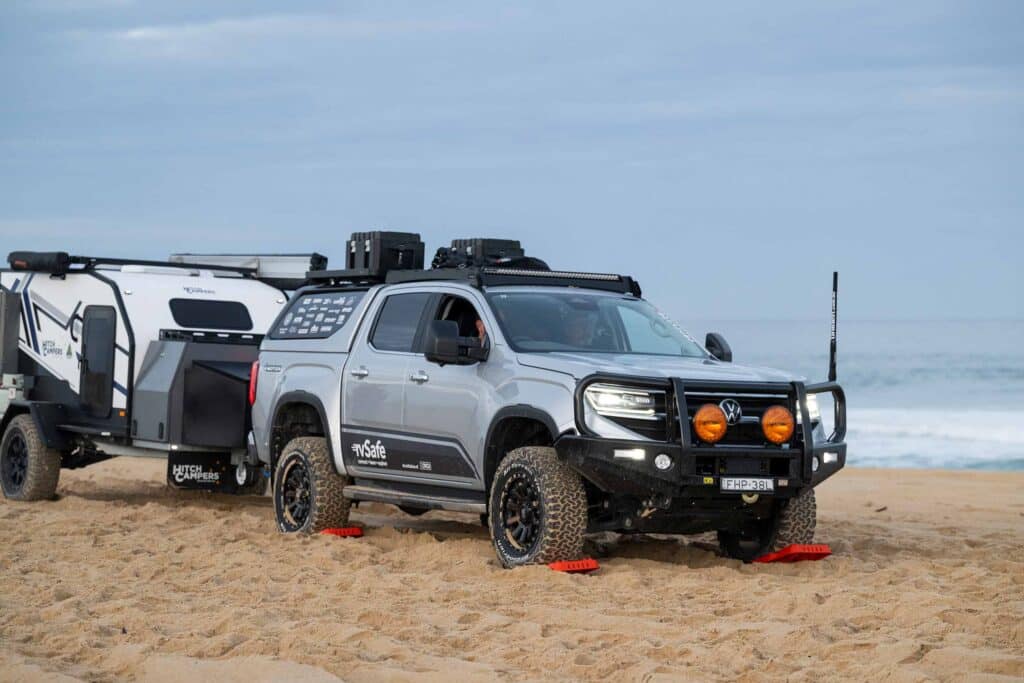
If the boards don’t cut it, it’s time to bring out the big guns and resort to a snatch strap or winch. Both need to be appropriately rated for the combined trailer and vehicle weight (GCM) and attached to rated recovery points with soft shackles. In your kit bag you will also need a tree trunk protector (to avoid ringbarking a tree in a recovery), a bridal cable for attaching to two recovery points, and cable dampeners, which provide an air brake to stop a snapped cable from becoming dangerously airborne. Check out Saber Offroad for all the recovery gear you need.

The stakes are higher when you’re towing a trailer and not every spill is recoverable without help, especially when you’re party is travelling solo. For this reason, it’s important to have communication so you can raise the alarm in an emergency. If you’re out bush, chances are you won’t have phone reception, so make sure you have a UHF radio (these are also crucial for communicating with your recovery team while they pull you out). The downside of UHF radios is they have limited range (about 15km) so a secondary, long-range device is an important back up. Consider investing in a satellite phone, personal locator beacon PLB), emergency position indicating radio beacon (EPIRB) or a satellite communicator like a ZOLEO.
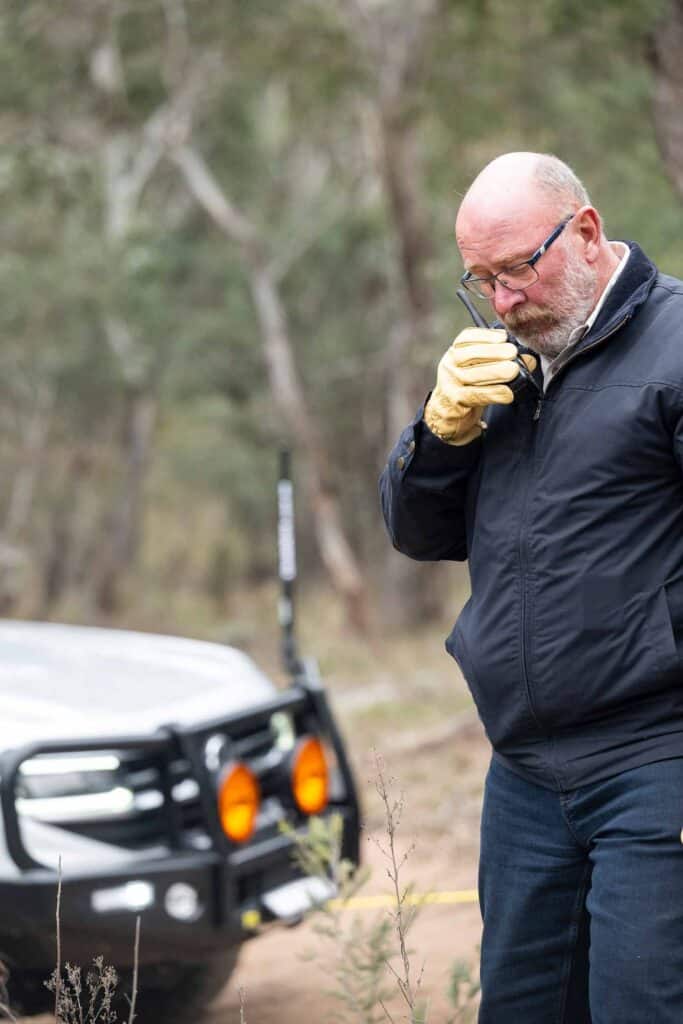
Not all 4×4 tracks and beach crossings are suitable for trailers. Even with a souped-up chassis, high clearance and tough-as-nails slimline design, there are some places a caravan just can’t go. Tight bends, soft-as-quicksand terrain and steep rutted goat tracks are not your friend. Do your homework so you know what to expect before you set out and if the road is appropriate for the trailer of your length, height and weight. Roads change depending on recent weather and use, so check the latest conditions and if you’re not sure, don’t go.